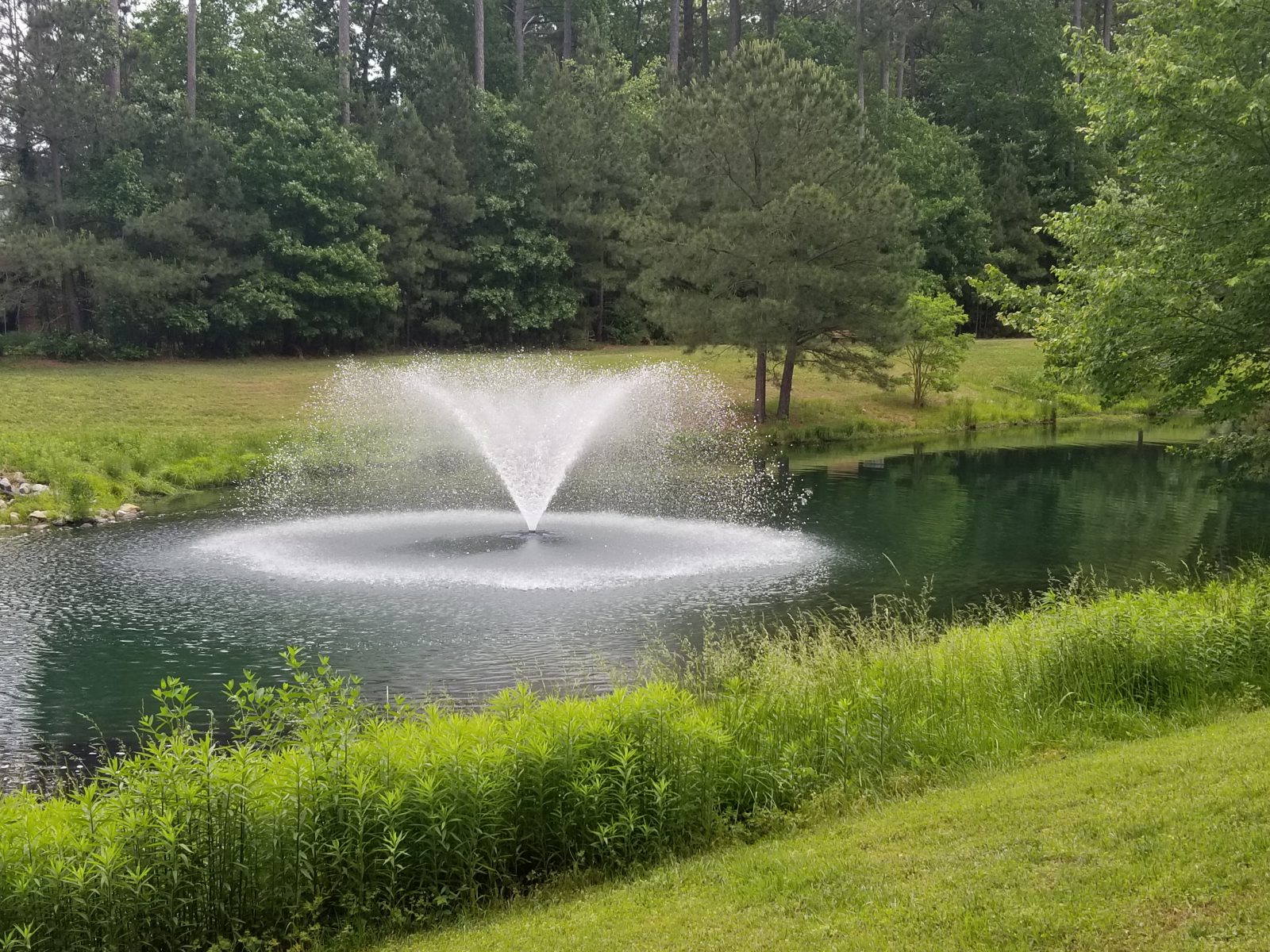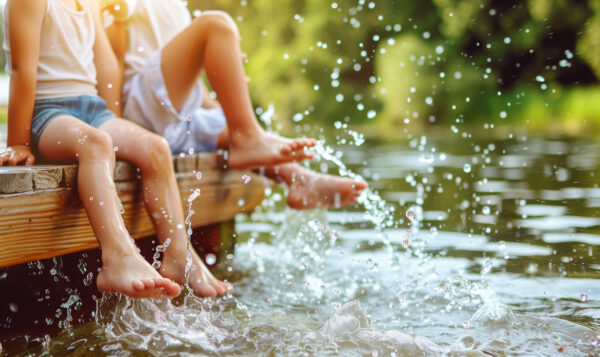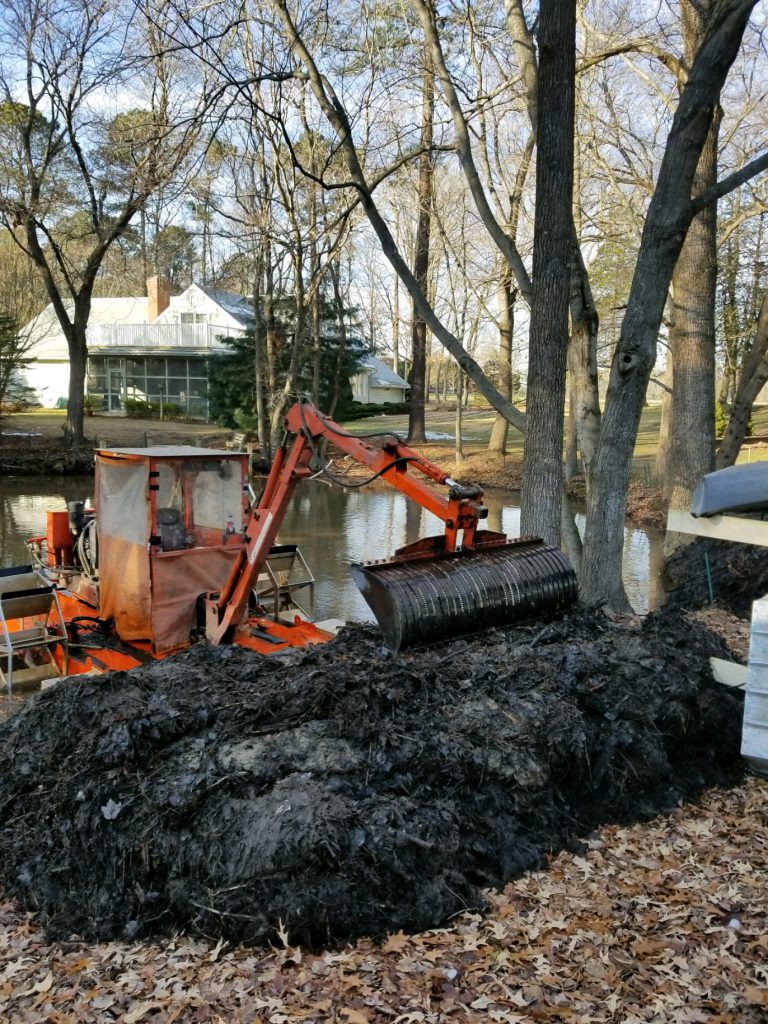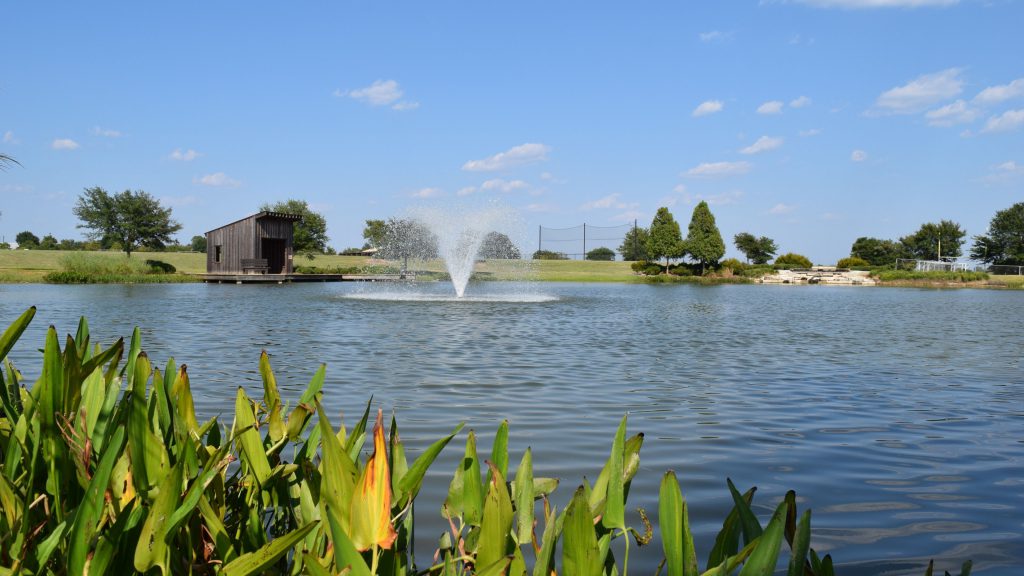
Improve Water Quality with Natural, Sustainable Solutions
Aquatic weeds and algae can single-handedly ruin time spent in and around lakes and ponds. These nuisances are unsightly, smelly, and foul to walk or wade through. They may also be dangerous. Aquatic weeds can ensnare water equipment, fish hooks, and even swimmers. Some forms of algae are known to produce toxins that are detrimental to the health of humans, pets, and wildlife. Algae and weeds are quick to spread without intervention, but stakeholders seeking to eliminate undesirable growth have many natural solutions at their fingertips.
Why Do Aquatic Weeds & Algae Develop?
Before choosing how to manage aquatic weeds or algae, it’s important to understand why they occur. All lakes and ponds contain nutrients like Phosphorus and Nitrogen, which can be measured by professional water quality tests. Like our bodies, plants and wildlife need nutrients to live. However, it’s possible to consume too many nutrients. In the water, imbalanced nutrient levels can result in explosive plant growth. As the weed and algae die and decompose, they introduce additional nutrients into the water, creating a cycle that’s distressing to the waterbody and the people who rely on it for stormwater collection, recreation, or community aesthetics.
Prevent Algae & Weed Growth with A Proactive Approach
Though weeds and algae can be safely managed with highly-targeted pesticides applied by backpack sprayers or professional drones, the best approach is prevention. This often starts with removing the excess nutrients that are present and eliminating the primary sources of nutrient pollution.
Removing Nutrient-Rich Muck from Waterbodies
Nutrient-rich muck, plant matter, and debris can be physically removed from the water using a mechanical hydro-rake, which takes up hundreds of pounds of detritus in each scoop and deposits it on shore for disposal. This method helps reduce nutrient concentrations as well as restore depth and volume to the waterbody, simultaneously reducing the risk of flooding. Alternatively, stakeholders may opt for “biological dredging.” Rather than physically scooping muck from the bottom, professionals will introduce beneficial biological bacteria into the water to naturally consume it. Biologicals are very similar to the probiotics we take to keep our guts healthy.
Managing Excess Nutrients through Nutrient Remediation
Another solution to target excess Phosphorus and Nitrogen is called nutrient remediation. During this process, a naturally-occurring material like bentonite clay or aluminum sulfate is applied to the water where it binds with nutrients that are suspended in the water column. Reducing nutrients in the water column results in improved water quality. When water quality is healthy, lakes and ponds are less likely to experience water quality issues like algal blooms and aquatic weeds.
Create A Healthy Shoreline
Once nutrients are restored to balanced levels, external nutrient sources must be identified. Phosphorus and Nitrogen are found in most organic materials, including pet waste, leaves and lawn clippings, garden fertilizers, and trash—all of which get washed into our lakes and ponds during rainstorms. A healthy shoreline is the key to inhibiting these external nutrient sources. Existing erosion can be repaired with bioengineered solutions utilizing a knitted mesh containment system that is filled with organic material, helping form a strong shoreline. From there, native grasses and flowering plants can be planted on top to create a natural barrier around the lake or pond. When maintained correctly, these beneficial buffers intercept nutrients and pollutants before they can enter the water.
Enhance Aesthetics with a Fountain or Aeration System
A healthy shoreline not only improves water quality but also helps restore aesthetic beauty to the ecosystem. This can be further enhanced with the introduction of a floating fountain. In addition to creating beautiful patterns and light displays, fountains help circulate the waterbody. They are often paired with submersed aerators that pump additional air to the bottom. Together, these systems increase dissolved oxygen levels, promoting healthier, more balanced water quality conditions.
Achieve a Healthy, Balanced Waterbody with Annual Management
Each of these natural management tools plays a valuable role in enhancing water quality and reducing the likelihood of aquatic weed and algae growth, but not all waterbodies will respond the same way. Lakes and ponds are complex ecosystems that continually change based on hundreds of internal and external factors. That’s why it’s so important to lean on a management plan that’s tailored specifically to your waterbody and your long-term goals. A customized approach is the most reliable way to maximize your budget while boosting your health and happiness around the water.
Click here to learn more about our Annual Management Programs.
Managing Aquatic Weeds & Algae
SOLitude Lake Management is a nationwide environmental firm committed to providing sustainable solutions that improve water quality, enhance beauty and preserve natural resources.
SOLitude’s team of aquatic scientists specializes in the development and execution of customized lake, stormwater pond, wetland and fisheries management programs. Services include water quality testing and restoration, algae and aquatic weed control, installation and maintenance of fountains and aeration systems, shoreline erosion control, muck and sediment removal and invasive species management. SOLitude partners with homeowners associations, golf courses, private landowners, businesses and municipalities. SOLitude Lake Management is part of Rentokil, a leading business services company, operating across the United States, Canada and Puerto Rico.
For more information, visit SOLitude Lake Management at solitudelakemanagement.com, and connect on Facebook, LinkedIn and Twitter.














